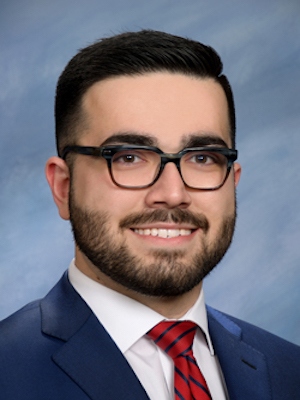Safety Nets Under Fire: Downstate Bears the Cost of Gun Violence
By Office of the President | Jan 28, 2025

Panos Kougias, M.D., MSc. & Sherene E. Sharath, Ph.D., MPH
Firearm-related injuries represent a significant public health crisis and impose an immense financial burden on patients, hospitals, and society. A recent study titled Financial Burden and Outcomes of Firearm Injuries in U.S. Hospitals, 2003–2020, led by Panos Kougias, M.D., MSc., Chair of Surgery, and Sherene E. Sharath, Ph.D., MPH, Surgery Director of Clinical and Health Services Research, examines the financial and societal impacts of these injuries. Co-authors Gozienna Okeke, BS, and Mahrukh Sana, BA—participants in Downstate’s Summer Program in Translational Disparities and Community-Engaged Research (SPRINTER)—along with the late Erfan Faridmoayer, M.D., collaborated on this critical research.
Conducted through Downstate’s CliNical Science Program for Independent Research (iNSPIRe) program, the study addresses a critical gap in firearm injury research. While existing studies often focus on the personal toll of firearm-related injuries, this work sheds light on the broader impact on hospitals, particularly safety-net institutions like Downstate.
The findings are staggering: Between 2003 and 2020, firearm-related injuries cost the United States $15.2B. Hospitalization costs ranged from $15,977 to $275,888 per patient, with rehabilitation and follow-up care driving expenses as high as $529,608. Medicaid and self-pay patients accounted for more than 70 percent of these costs, highlighting the financial strain borne by disadvantaged communities and the safety-net hospitals that serve them.
Like those in Downstate’s network, safety-net hospitals face the brunt of this crisis. Over the study period, costs for Medicaid-covered firearm injuries rose by 127 percent. Despite these mounting financial pressures, safety-net hospitals continue to achieve outcomes on par with better-funded institutions, demonstrating resilience and commitment to these vulnerable populations.
The study’s authors urge systemic changes, calling for expanded access to trauma care, increased funding for safety-net hospitals, and the implementation of targeted violence prevention programs. They highlight the importance of forecasting resource needs to help hospitals and communities sustain their care efforts and keep pace with ongoing challenges. At Downstate, partnerships with institutions like Kings County strengthen the support provided to underserved communities, with residency programs pivotal in bridging gaps.
Downstate remains steadfast in addressing urgent public health challenges through innovative programs like iNSPIRe and SPRINTER that train future healthcare leaders to tackle systemic inequities. As a foundation of Brooklyn’s diverse community, Downstate focuses on reducing the impact of firearm injuries, advancing health equity, and overcoming systemic barriers in healthcare.

Erfan Faridmoayer, M.D.
This research reflects the dedication and mentorship of Downstate faculty, with undergraduate students Gozienna Okeke (SUNY Binghamton) and Mahrukh Sana (Long Island University School of Nursing) making significant contributions as co-first authors. The study also honors the late Erfan Faridmoayer, M.D., a valued co-author who died before its publication. His work and dedication inspire all who contributed to this research, and this study is a tribute to his lasting legacy.